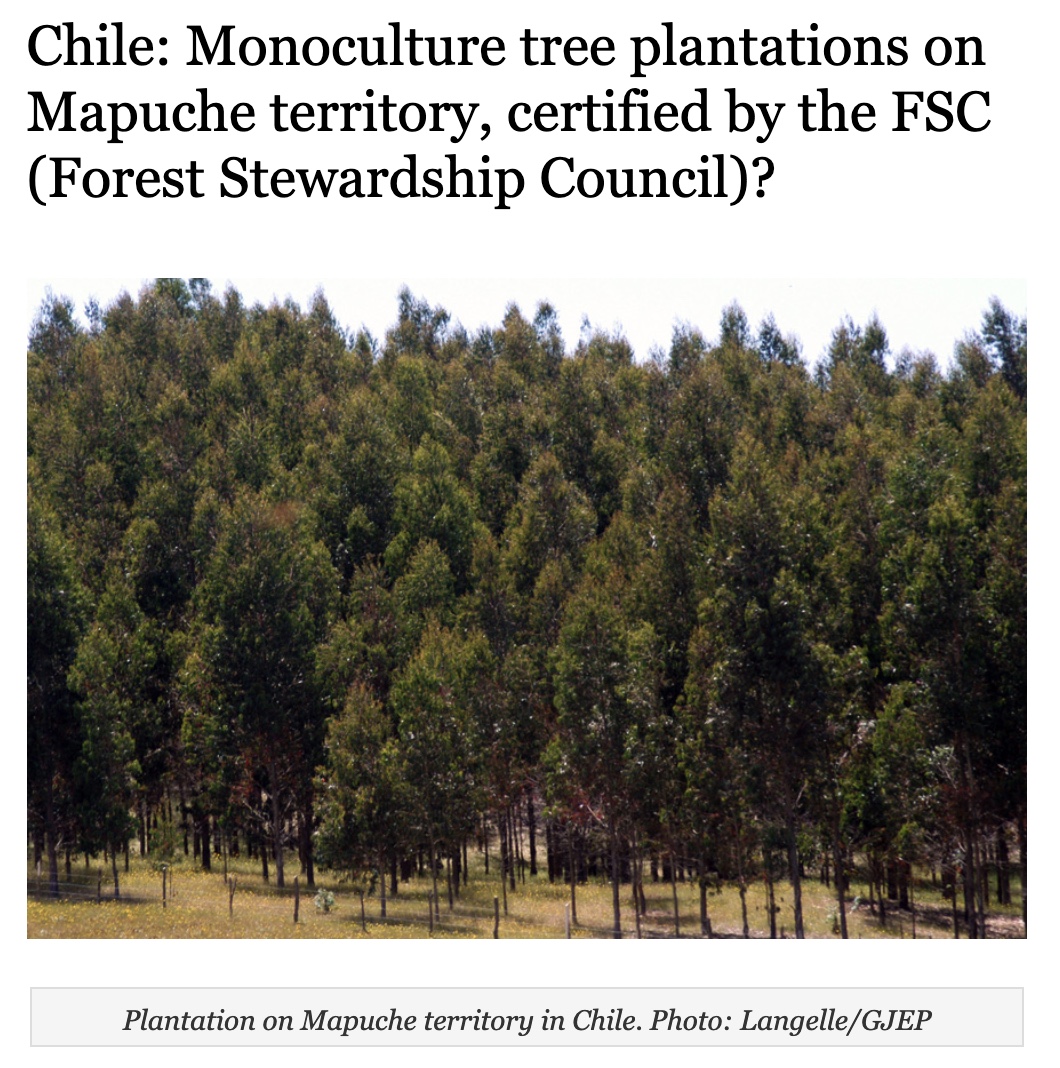The large #wildfires in #Chile are spreading quickly across large areas of non-native plantations of radiata pine and eucalyptus, many of them planted by foreigners during a dictatorship. These maps show recent MODIS heat detections on top of mapping of plantations (purple). 1/x 







Over 3 million acres of plantations were established in this region in the 80s and 90s. As seen in the American West, during severe weather, conifer tree farms burn like the sun. Even-aged forestry is turning out to be an ecological disaster, all over the globe. 2/x 



The @FSC_IC has certified over 3M acres of Chilean plantations as being 'sustainably managed'. But as in the USA, they failed to imagine the potential scale of wildfire losses in managed forests. Wildfire is a structural problem in tree farms, not easily mitigated. 3/x 

The World Bank's take on Chilean forests? Spend lots of money on planning, give Chile money to plant 300k acres more conifers by 2025 (but beef up firefighting), teach small landowners how to manage their tree farms like the big ones do, lots of feel-good language. 4/x 







The EU, World Bank, IMF, and many mega-NGOs continue to promote tree planting as one of the primary ways we can combat climate change, but storing carbon in matchsticks turns out to be a bad idea. Forest carbon offsets are 10 pounds of bullshit in a 5 pound bag. Think twice. 5/x 

Back to Chile - it's a terrible situation, but it didn't just come out of nowhere. Don't just blame climate change. Dictatorship, privatization, native land rights, global markets, international fire-war profiteering - there is a lot more to this story. 6/x 

Unfortunately, megafires are pushing us harder into even-aged forest management - even for companies that didn't want to go there. Adapting to the new normal, figuring out how to reforest in ways that acknowledge the inevitability of wildfire is the challenge of our times.
• • •
Missing some Tweet in this thread? You can try to
force a refresh























